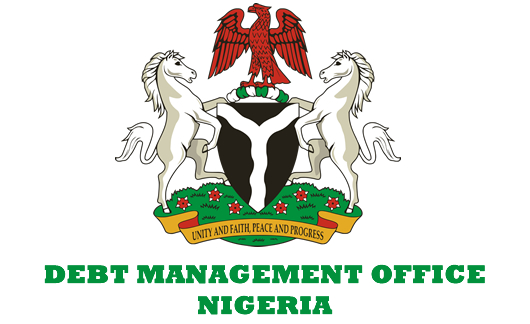Banks’ Non-performing Loans Fall Below 5%, First Time In 10 Years

The Central Bank of Nigeria (CBN) has stated that for the first time in about a decade, the non-performing loans (NPLs) levels of commercial banks in Nigeria has fallen below the regulatory benchmark of five per cent to 4.94 per cent as at the end of December 2021.
This was highlighted in the personal statements of the members of the Monetary Policy Committee (MPC) released by CBN on its official website over weekend.
In their assessment of the Nigerian banking sector, the committee members noted that the industry has remained resilient with average non-preforming loans falling beyond regulatory requirement.
This is also as total credit also increased by N4.09 trillion between end-December 2020 and end-December 2021 with increased credit to manufacturing, general commerce and Oil & Gas sectors.
According to CBN Deputy Governor, Aishah Ahmad, non-performing loans dropped to its lowest level in over a decade despite the increased lending by banks.
She noted that total credit had increased by N4.09 trillion between end of December 2020 and December 2021 with significant growth in credit to manufacturing, General commerce and Oil & Gas sectors.
According to her, “Key industry aggregates also continued their year-on-year upward trajectory with total assets rising to N59.24trillion in December 2021 from N50.99 trillion in December 2020, while total deposits rose to N38.42 trillion from N32.21 trillion over the same period. Total credit also increased by N4.09 trillion between end- December 2020 and end-December 2021 with significant growth in credit to manufacturing, General commerce and Oil & Gas sectors. This impressive increase was achieved amidst continued decline in non-performing loans ratio from 5.10 per cent in November 2021 to 4.94 per cent in December 2021, 6 basis points below the regulatory benchmark for the first time in over a decade.
“Furthermore, results of stress tests showed resilience of banks’ solvency and liquidity ratios in response to potential severe macroeconomic shocks. However, the Bank must remain vigilant to proactively manage probable macro risks to the financial system such as lingering spillover effects of the pandemic, winding down of forbearance measures, and myriad risks to financial stability including exchange rate, operational and cyber security risks.”
Also, a member of the MPC, Akinniju Festus noted that NPLs had fallen below the five per cent prudential requirement, for the first time, after a lengthy period.
He also noted that Capital Adequacy Ratio despite its slight decline from 15.1 per cent in December 2020 to 14.53 per cent in December 2021, is still above the prudential requirement of 10 per cent.
“Liquidity ratio at 41.33 per cent was also higher than 30 per cent prudential requirement. Both Returns on Assets and Returns on Equity fell in December 2021 relative to December 2020. Operating costs to income rose from 68.2 per cent in December 2020 to 73.1 per cent in December 2021, ”he said.
Another member of the MPC, Aliyu Ahmed added that the improvement in NPLs was aided by sound regulatory oversights of the CBN during the year.
“The banking sector remained sound, safe and resilient as Financial Soundness Indicators (FSIs) were within their regulatory thresholds. Industry Capital Adequacy Ratio (CAR) at 14.53 percent at end-December 2021 remained above the 10 percent regulatory minimum. Asset quality measured by Non- Performing Loans (NPLs) improved to 4.94 percent at end-December 2021, below the regulatory threshold of 5 per cent.
“The improvement in NPLs is attributed mainly to sound regulatory oversights of the CBN during the year. Gross credit rose from N20.48 trillion in December 2020 to N24.57 trillion in December 2021 on account of increased industry funding base and CBN’s directive on Loan to Deposit Ratio, ”he said.
Read Also: Banks Cut Borrowing From CBN By 47%
Akinniju noted that interest rate spread month-on-month widened to 25.3 per cent in December 2021. While prime lending rates declined to 11.68 per cent, maximum lending rates rose to 27.58 per cent. Average savings rates declined to 1.25 per cent. The administrative measures put in place by the CBN, restrained liquidity surfeit in the system. Tight liquidity conditions prevailed in the banking system as average net liquidity balance stood at N182.71 billion as at end-December 2021, below the benchmark of N313.8 billion – N450.00 billion.
Meanwhile, CBN Deputy Governor, Adamu Lamtek said the option of tightening monetary policy still remains on the table even as the decision becomes increasingly difficult to make. This is as inflation continues to rise as the country heads into electioneering year in 2023.
“Also the US FED has already provided a forward guidance on at least three rate hikes in 2022, a move that will affect foreign currency exposures of the federal government and private sector institutions, especially commercial banks. It may also lead to more exits of FPIs from local equity market. Against the backdrop of pressure on both output and prices, I must admit, monetary policy manoeuvres would be difficult, to say the least.
“In the circumstance, complementary fiscal actions are needed to ease the burden of adjustment on monetary policy. Obviously, policy support has been very instrumental to macroeconomic recovery in 2021. More will be needed from the fiscal side in 2022 especially in sectors like agriculture, SMEs and solid minerals. In addition, physical infrastructure and security ought to maintain their priority position on the fiscal plate in year
“I believe, the option of tightening policy using the policy rate remains on the table as long as inflationary pressures persist. I am however hopeful that the policy headroom for supporting growth will not narrow any further by the next meeting of the MPC in March 2022,” Lamtek stated.








